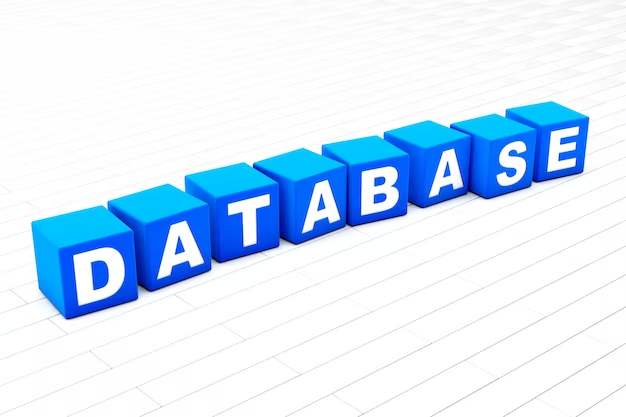Understanding Object-Oriented Databases: A Deep Dive
In the realm of modern data management systems, object-oriented databases (OODBs) stand as a distinct and powerful approach. Unlike traditional relational databases that store data in structured tables, object-oriented databases store data in a more intuitive and flexible manner, resembling the way objects are organized in object-oriented programming languages. This article delves into the intricacies of object-oriented databases, explaining their core concepts, advantages, challenges, and frequently asked questions.
What is an Object-Oriented Database?
An Object-Oriented Database (OODB) is a type of database management system that leverages the principles of object-oriented programming to organize and store data. It allows for the representation of real-world entities as objects, complete with their attributes and methods, thus facilitating a more natural and intuitive approach to data modeling.
In an OODB, data is not confined to rigidly defined tables as in relational databases. Instead, it is stored in objects, which can be interconnected through relationships, inheritance, and encapsulation. This results in a more holistic representation of data, closely mirroring the structures found in object-oriented programming languages like Java, C++, or Python.
Core Features of Object-Oriented Databases
| Feature | Description |
|---|---|
| Objects | Fundamental data units, representing real-world entities with attributes and behaviors. |
| Classes | Blueprints for creating objects, defining their common attributes and methods. |
| Inheritance | A hierarchical relationship where one class (subclass) inherits attributes and methods from another (superclass). |
| Encapsulation | The bundling of data (attributes) and methods that operate on the data, restricting access to internal details. |
| Relationships | Associations between objects, depicting connections such as one-to-one, one-to-many, or many-to-many. |
| Complex Data Structures | Support for more intricate data types like arrays, lists, sets, and graphs. |
| Querying Flexibility | Ability to query data using object-oriented queries that closely resemble programming language syntax. |
| Persistence Mechanism | Capability to store objects and their relationships persistently, even after the program terminates. |
Advantages of Object-Oriented Databases
1. Real-World Modeling
The crux of OODBs lies in their innate ability to emulate the real world within the digital realm. Imagine a complex ecosystem where entities intermingle, and interactions are intricate – OODBs become the canvas upon which this intricate tapestry is painted. They mirror real-world entities and their relationships, making them an impeccable choice for domains rife with complex and interconnected data structures. Through the lens of OODBs, data transforms from mere entries into active participants, enhancing the scope of analysis and comprehension.
| Advantage | Description |
|---|---|
| Real-World Modeling | OODBs mimic real-world entities and their interactions, making them ideal for domains with intricate data structures. |
2. Flexibility
One of the most striking differentiators of OODBs is their inherent flexibility. Traditional relational databases demand meticulous schema planning, often resulting in rigidity that hampers agility. OODBs present an antidote to this conundrum. The fluid nature of objects permits modifications, extensions, and restructuring without dismantling the entire database framework. As applications evolve and business requirements mutate, OODBs offer the luxury of adaptation without the shackles of schema modifications.
| Advantage | Description |
|---|---|
| Flexibility | OODBs allow for adaptable schema alterations, enabling modifications, extensions, and restructuring without disrupting the entire database structure. |
3. Complex Data Structures
In the realm of data storage, complexity often begets innovation. While traditional relational databases grapple with the storage of intricate data structures, OODBs soar beyond constraints. These databases seamlessly accommodate complex data structures natively, alleviating the need for data manipulation prior to storage. Imagine a scenario where intricate hierarchical relationships are stored without any translation or compromise. OODBs offer a direct conduit to realizing this vision.
| Advantage | Description |
|---|---|
| Complex Data Structures | OODBs natively store complex data structures, eliminating the need for pre-storage data manipulation. |
4. Performance
Performance, the cornerstone of any database system, is redefined through the lens of OODBs. In domains dominated by object-rich applications, OODBs exhibit their prowess. The streamlined alignment between application objects and database entities culminates in enhanced performance. The reduction in mapping complexity equates to expedited operations, propelling OODBs to the forefront of performance-driven ecosystems.
| Advantage | Description |
|---|---|
| Performance | OODBs excel in object-centric applications, capitalizing on reduced mapping intricacies for heightened performance. |
5. Reduced Impedance Mismatch
The age-old challenge of “impedance mismatch” between programming languages and relational databases meets its resolution in OODBs. The chasm between object-oriented paradigms and tabular relational structures is bridged, fostering seamless synergy. Developers revel in a landscape where their code’s object-oriented essence seamlessly harmonizes with the database’s architecture. The result? A symbiotic relationship, minimizing complexities and enhancing productivity.
| Advantage | Description |
|---|---|
| Reduced Impedance Mismatch | OODBs alleviate the disparity between object-oriented programming languages and relational database structures. |
6. Querying Simplicity
In the labyrinth of database querying, simplicity is a beacon. OODBs resonate with this principle by embodying querying languages that mirror the syntax of programming languages. This union of familiarity and functionality empowers developers to weave intricate queries effortlessly. The steep learning curve inherent in querying is replaced with an intuitive process, where syntax becomes an ally rather than an adversary.
| Advantage | Description |
|---|---|
| Querying Simplicity | OODB queries resemble programming language syntax, facilitating ease of use and comprehension for developers. |
7. Inheritance
The concept of inheritance takes on new dimensions within the realm of OODBs. Inheritance support ensures efficient reuse of code and data structures, sparking a renaissance of modularity and reduction in redundancy. Objects inherit attributes and behaviors, paving the way for a structured hierarchy that befits the object-oriented paradigm. The result is a database ecosystem that echoes the elegance of programming inheritance.
| Advantage | Description |
|---|---|
| Inheritance | OODBs promote code and data structure reuse through inheritance, fostering modularity and reducing redundancy. |
Challenges and Considerations

Despite their advantages, object-oriented databases also present challenges that need to be taken into account:
1. Limited Adoption
The echoes of history reverberate in the data realm, where the dominion of relational databases remains steadfast. The legacy of relational databases spans decades, etching a trail of familiarity and expertise that becomes a formidable wall for OODBs to climb. The limited adoption of OODBs can be attributed to this historical continuum, which roots relational databases deeply within industry practices. This scarcity of widespread familiarity acts as a threshold challenge, demanding an effort to bridge the gap between tradition and innovation.
| Challenge | Description |
|---|---|
| Limited Adoption | The industry’s reliance on relational databases results in a lack of widespread familiarity and expertise with OODBs. |
2. Complex Query Optimization
Within the intricate labyrinth of OODBs lies a challenge that demands a discerning eye for optimization. Queries, the conduits through which we extract meaning from data, can become complex journeys due to the intricate relationships and diverse data structures characteristic of OODBs. The optimization of these queries demands a nuanced approach that navigates through the intricacies of object hierarchies and interconnections. As the complexity of data relationships grows, so does the challenge of orchestrating efficient query optimization.
| Challenge | Description |
|---|---|
| Complex Query Optimization | Optimizing queries in OODBs is complex due to intricate relationships and diverse data structures, requiring careful consideration. |
3. Data Integrity
The sanctity of data integrity finds itself at a crossroads within the realm of OODBs. Unlike the disciplined enforcement of centralized schemas in relational databases, OODBs march to a different tune. The decentralized nature of OODBs grants flexibility but also raises concerns about data integrity. Ensuring that data maintains its accuracy, validity, and consistency becomes a dance between the freedom of object-oriented flexibility and the governance of data governance mechanisms. The challenge lies in weaving a tapestry of data integrity that harmonizes with the free-spirited nature of OODBs.
| Challenge | Description |
|---|---|
| Data Integrity | Maintaining data integrity in OODBs can be more intricate than in relational databases due to the absence of centralized schema enforcement. |
4. Scalability
The grand stage of scalability welcomes both champions and challengers, and OODBs find themselves on this dynamic platform. While some OODBs shine as champions of scalability, others might grapple with the challenge of horizontal expansion. Large-scale applications, adorned with a multitude of users and soaring ambitions, demand a seamless journey through the expanses of scalability. The challenge lies in selecting an OODB that aligns with the crescendo of user loads, striking a harmonious chord between performance and scalability.
| Challenge | Description |
|---|---|
| Scalability | Some OODBs may face challenges in achieving horizontal scalability, impacting their suitability for high-traffic, large-scale applications. |
5. Migration Efforts
The transition from one database paradigm to another is a symphony of migration efforts. In the case of OODBs, this symphony might bear the weight of time and resources. Migrating from the entrenched abode of a relational database to the newfound territory of an OODB can be a voyage laden with complexities. Established applications, intertwined with the fabric of relational databases, beckon migration that’s not just technical but also strategic. The challenge emerges in ensuring a seamless transition that balances the benefits of OODBs with the investments demanded by migration.
| Challenge | Description |
|---|---|
| Migration Efforts | Migrating from relational databases to OODBs can be resource-intensive and time-consuming, particularly for well-established applications. |
Conclusion
Object-oriented databases provide a unique approach to data management, aligning closely with the principles of object-oriented programming and offering a more intuitive and flexible way to represent complex data structures. While they might not be a one-size-fits-all solution, OODBs can be incredibly powerful tools in industries where data modeling is intricate and relationships play a pivotal role. For a better understanding of how OODBs work, check out this video:
As with any technology choice, the decision to use OODBs should be based on a thorough assessment of your application’s requirements, existing infrastructure, and long-term scalability needs.
FAQ
While OODBs offer advantages in specific scenarios, relational databases remain suitable for many applications, especially those that rely heavily on structured data and established relational models.
Industries like multimedia, CAD/CAM, spatial databases, and scientific research, where complex data structures and relationships are prevalent, can benefit from OODBs.
Yes, OODBs can be used in web applications, especially when the application’s data closely resembles object-oriented structures. However, the choice should be based on a thorough assessment of the application’s requirements.
Yes, there are several notable OODBs in the market, including ObjectDB, db4o, and Versant, each with its own features and capabilities.
Yes, many OODBs support ad-hoc querying, but the syntax might differ from traditional SQL due to the object-oriented nature. Developers often need to learn a new querying approach.
The learning curve can vary based on your familiarity with object-oriented programming and database concepts. Developers experienced in both areas might find it easier to adapt.






Leave a Reply